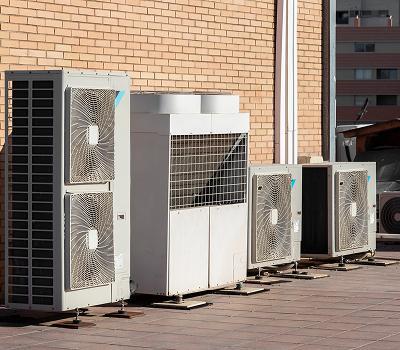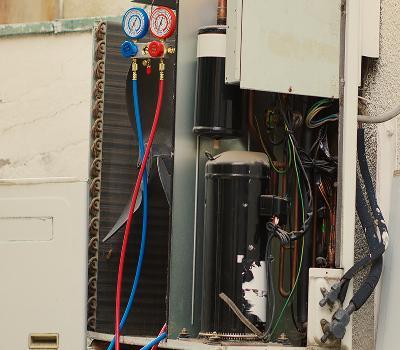What is RF Testing? Here’s What You Need to Know About Radio Frequency Testing

Many products like mobile phones, Wi-Fi devices, radios, remote controls, and antennas need to undergo RF (Radio Frequency) testing. This evaluation method helps product manufacturers to check if their products send and receive signals properly without causing interference.
Today, RF testing is essential for manufacturers before selling their wireless devices in the market. This approach helps them ensure that their product is safe to use, has robust performance and complies with both local and global standards. If you want to learn more about RF testing, this post is just for you as we are going to discuss the essence of RF testing, including its types and more.
What is Radio Frequency Testing?
Radio frequency (RF) testing is a way to check if your product emits or receives radio signals safely. It is needed for radio and telecommunications equipment to check their quality and performance for better manufacturing. With the help of radio frequency tests, you can ensure your products are aligned with legal standards.
Radio frequency Testing is performed with the help of equipment like spectrum analysers, signal generators, and antennas. These tools allow testing teams to check signal strength, frequency, and interference to make sure the device works properly. Antenna testing teams make sure equipment is working properly and complying with government regulations.
Why is Radio Frequency Testing Important?
Radio frequency (RF) testing is an important test method for electronic equipment. It ensures the proper and safe electromagnetic compatibility (EMC) of radio frequency devices. When manufacturers connect with the best testing laboratory, they can ensure that their devices follow legal and global standards. The laboratory testing team helps manufacturers ensure that their product does not cause signal problems with other devices.
Without RF testing, you may fail to create high-performance products, such as mobile phones, WiFi routers or Bluetooth gadgets, which may not function properly or cause interference. Radio frequency testing protects users from harmful radiation and ensures that the product functions as expected.
Types of Radio Frequency Testing
Radio frequency testing is essential for radio and telecommunications equipment. Many devices require specific types of radio frequency testing to meet diverse performance, safety, and compliance requirements. There are many types of RF testing due to the unique demands of products. These are the types of radio frequency testing you must know about:
Emissions Testing
Emissions testing helps manufacturers check whether their product emits radio signals within legal limits to avoid interference with other electronics. With the help of emissions testing, you can meet major regulations like the FCC or CE and sell products legally. A top performance testing team ensures your product is tested with advanced instruments. They test your smartphones, laptops, televisions and radios.
Emission testing involves measuring unwanted signals from the device in a controlled lab. This ensures that the product you build does not disturb other nearby equipment and functions safely and correctly.
Immunity testing
Immunity testing is another type of radio frequency testing. Its purpose is to check whether the device you built works properly when exposed to external radio signals or interference. Product manufacturers need immunity testing to ensure their products remain reliable in real-life environments.
Test labs use their equipment, like signal generators, amplifiers, and testing chambers, to perform this testing. These allow the testing lab to perform everything seamlessly and efficiently. Medical devices, computers, and cars, are required to go through immunity testing. In the process, experts keep your device in controlled RF signals to see if it still functions correctly without errors or failures.
Main Standards in Radio Frequency Testing
Here are the main standards in Radio frequency testing that you must know about:
FCC Part 15 (USA)
The Federal Communications Commission (FCC) (USA) established the FCC Part 15 (USA) set of regulations. This standard sets regulations for products like WiFi routers, Bluetooth devices, and remote controls.
ETSI EN 300 series (Europe)
The ETSI EN 300 series are European standards that are made for radio equipment and devices. It checks various properties of the products like spectrum efficiency, transmitter power, and receiver performance.
CISPR Standards
CISPR standards are international guidelines for controlling electromagnetic interference (EMI) from electrical and electronic devices. RF antenna manufacturers have to meet this standard to prevent harmful radio frequency emissions.
IEEE Standards
IEEE standards set technical guidelines for designing and testing RF systems. Manufacturers who conform to this standard demonstrate that their products have improved performance, safety, and compatibility. It is important for RF antennas to check their signal quality, communications, and more.
Final Words
RF testing is a crucial process for wireless devices that use technologies like Wi-Fi, Bluetooth, cellular, and more. It helps antenna manufacturers to build premium-quality antennas in bulk. Radio frequency testing is also required for routers, adapters, laptops, tablets, headphones, speakers, and wearables to check their credibility and quality of manufacturing. By associating with a testing lab, you can find out the flaws and shortcomings in your product and for your target consumer. RF testing prevents manufacturers from having to recall and return goods, which also saves them money.
Categories
Related Blogs

BIS Certification for Electric Noodle Makers IS 302 (Part 1): 2024

Telecommunications Equipment Testing Solutions

What is BEE Certification?

BEE Testing in India: Ensuring Energy Efficiency and Compliance

All You Need To Know About CE Certification

Trusted and Best NABL Accredited Test Lab in Delhi NCR

BIS Certification for Ducted and Package Air Conditioners IS 8148:2018
_2019.jpg)
Safety Glass For Road Transport IS 2553 (Part 2):2019

BIS Certification for Hermetic compressor IS 10617:2018

